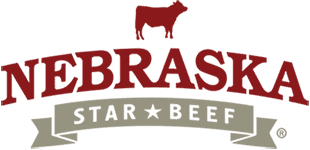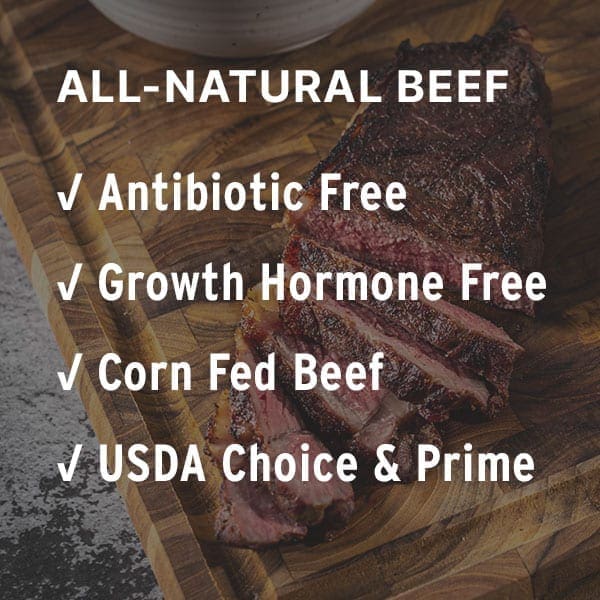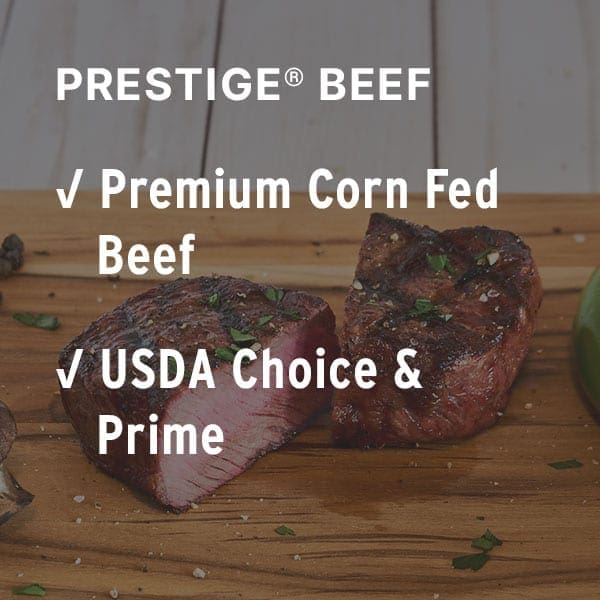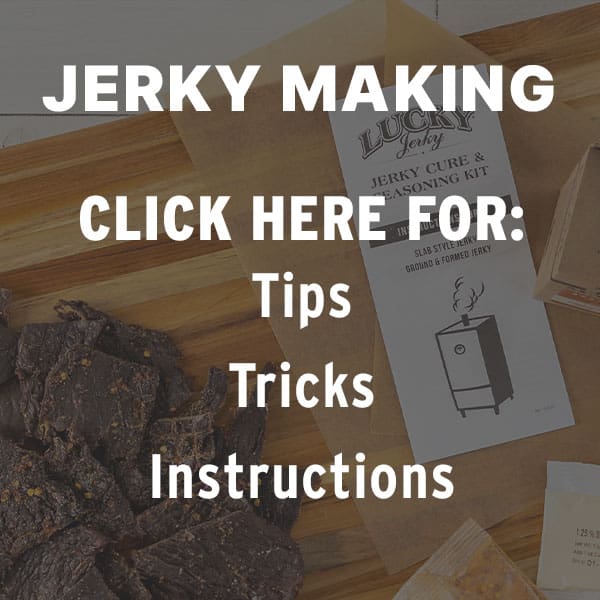We still get a lot of questions about how to cook the perfect steak. Of those questions, the most common is….”How long should I cook it?” Frankly, there are very few questions which frustrate me more…
Cook Time:
Cook time is irrelevant. Cook time is 100% dependent on the temperature of the cooking implement – grill, stove, pan, toaster oven, broiler, Foreman grill…you pick it – AND the internal temperature of the steak when it goes on the heat. Cooking time can vary greatly depending on these two factors alone. Cook time is probably the most inaccurate metric by which to cook a steak.
Internal Temperature:
Internal temperature, on the other hand, will tell you EVERYTHING about how the steak is cooking. Internal temperature is dependent on the beginning temperature of the steak and the way the heat is applied to the steak during the cooking process. Keeping track of the internal temperature of the steak is the only way to KNOW when the steak is done perfectly. Trying to consistently cook the perfect steak with a “6 minutes on the first side and 5 minutes after it’s flipped” is like going to the tarot card reader to get your blood pressure checked… Just use a simple digital thermometer and keep track of the internal temp. If you’re not familiar with how internal temp translates to cooked steaks, here’s the “key” that I use:
- 110F and below – “Blue” rare
- 110F-115F – Rare
- 116F -122F – Rare/Medium Rare
- 123F – 128F – Medium Rare
- 129F – 135F – Medium Rare/Medium
- 135F or more – You don’t deserve nice things…
If that temperature scale seems a little lower than you expected…that’s because it is. When cooking, especially on high heat, which is the best option for steaks, it is very common for the internal temperature to “coast up” an additional few degrees after the steak has been removed from the heat source to rest.
Seasoning:
A little goes a long way. What’s the point of spending a little extra cash on a great steak?? To get great tasting, tender BEEF, of course. If one “encrusts” that steak in seasoning, or rub, or whatever the fad…can one really taste the beef?? So, just what is the best seasoning for steak? Variety is the spice of life, and we like to mix it up, but we will always be big fans of our first steak seasoning, “Signature™ Seasoning” our “SPG” is also fantastic on steak…but…if all you have is fresh ground salt and black pepper, you can’t go far wrong. If you can find some thyme, rosemary, and butter, one can elevate the basic “salt and pepper” blend to simple perfection…just don’t get carried away…
Marinades:
Marinating a good steak is wasting a good steak…unless you just don’t like the taste of good beef. Marinating is the process of soaking a piece of meat for a significant period of time in a solution, typically acidic. Marinating will accomplish two things: 1. It will break down the muscle fibers chemically – chemical tenderization. 2. It will infuse the flavor of the marinade into the entire steak. One might think…”Well, how are those bad things?? It makes a steak more tender and adds flavor.” And those might be good things….on a steak that isn’t very tender and is lacking flavor to begin with… So, if you have a cheap steak without proper age…you may have a good candidate for a marinade. If you’ve got a properly aged steak, similar to what we sell here at Nebraska Star® Beef, there really isn’t any need for marinades.
Steak Sauce:
It can be fantastic on steak fries, it’s also pretty good on roasts and roast beef sandwiches. We’ve heard of people using it on steaks, but we typically don’t. Steak sauce is typically vinegar based and again, it can just be an overwhelmingly strong in comparison to the flavor of a quality aged steak. From our perspective, if someone asks for steak sauce when we’re serving steaks, we take offense. If we’re having roast or a cut like brisket, sauces are expected and typically add to the experience.
Butter:
Butter should be a tool in every steak enthusiast’s tool box. Butter can – and should – be used when cooking steaks. Butter does a couple things. First, it’s delicate flavor pairs fantastically with steak. It adds a velvety mouth feel and adds a layer of deliciousness that can only be provided by butter. Another really cool thing about butter is the effect that it has on pan searing steaks. It browns at a much lower temperature than cooking oil, which means that by using butter, one can sear a steak more gently, and with better flavor, than when using oil. Butter is also great to help meld the flavors from herbs such as garlic, rosemary, thyme, and any other fresh herb, very efficiently and deliciously with a steak. Butter can also be used as a finishing garnishment on a steak when the steak is resting. When it comes to steaks, butter is your friend. Unsalted butter is best, as it allows the cook to control the salt…but salted butter is better than nothing.
How I Cook a Perfect Ribeye:
I begin by preheating my oven to its highest temp, which in my case is 450F. Next, I select one of our larger ribeyes, the 14oz All Natural Ribeye is pretty hard to beat. I thaw the steak in a pan of room temperature water and allow the steak to come up to room temperature while in the package. I select my seasoning. My personal go-to seasoning is our SPG. I season the steak lightly on both sides and place it on a drip rack that is on a cookie sheet. I then cook the steak in the 450F oven until it reaches an internal temperature of 95 to 100F and remove it from the oven and allow it to rest while I prepare a cast iron skillet. I set the range temp to approx. 325-350F and heat the pan throughly. Once the pan has come up to temperature, I lightly season both sides of the steak again, then add a “pat” of butter to the pan. As soon as the butter has melted, I place the resting steak on the butter. I allow it to sear until the steak releases easily from the pan, add another pat or two of butter and flip the steak and repeat the searing process. During the second sear, I begin to pay close attention to the internal temperature of the steak. I personally like to finish my steaks to 110-112F, they will typically “coast” up to 118-120F when they come off the pan. Also, during this process, I will spoon the melted butter and fat from the pan over the top of the steak to baste it in it’s own juices and the butter. When the steak reaches 110-112F I remove it from the pan and plate it and allow it to rest for 5 to 10 minutes before serving.
When it’s all said and done, one should cook and eat steak the way that brings them the most joy. If that’s a round steak with A-1 steak sauce, there is nothing wrong with that. We personally like to enjoy the flavor of premium, aged, beef so we only use things that add to that flavor and experience.
Happy Cooking!!







